20 Beautiful Mexican Flowers To Brighten Your Day (Symbolism And Pictures)
Are you looking for a way to add some vibrancy and color to your day? Look no further than the stunning array of Mexican flowers! These beautiful blooms can brighten up any room and are sure to bring a smile to your face. In this blog post, we’ll take a closer look at 20 of the most breathtaking Mexican flowers that will inspire you and add a touch of exotic charm to your life.
Belize Sage (Salvia miniata).
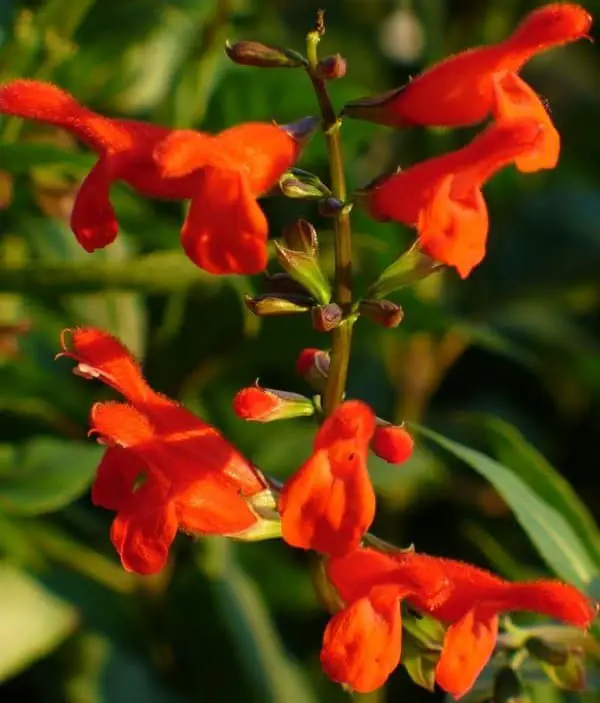
Belize Sage brings a touch of Mexican charm to any outdoor space with its dainty purple or lavender blooms. Reaching heights of around two feet tall and wide, this drought-tolerant plant thrives in full sun to partial shade, making it an excellent choice for xeriscaping or low-maintenance gardens. Its versatile nature allows it to flourish in a variety of environments. Beyond its aesthetic appeal, Belize Sage holds significant cultural value in Mexico.
The plant’s flowers hold deep meaning and symbolism, with ancient civilizations utilizing it as a medicinal herb to treat various ailments. The Aztecs, in particular, believed the plant possessed magical properties, incorporating it into rituals and ceremonies. Today, Belize Sage remains a revered symbol of Mexican heritage, often used in decorative arrangements and celebrations.
Bird of Paradise.
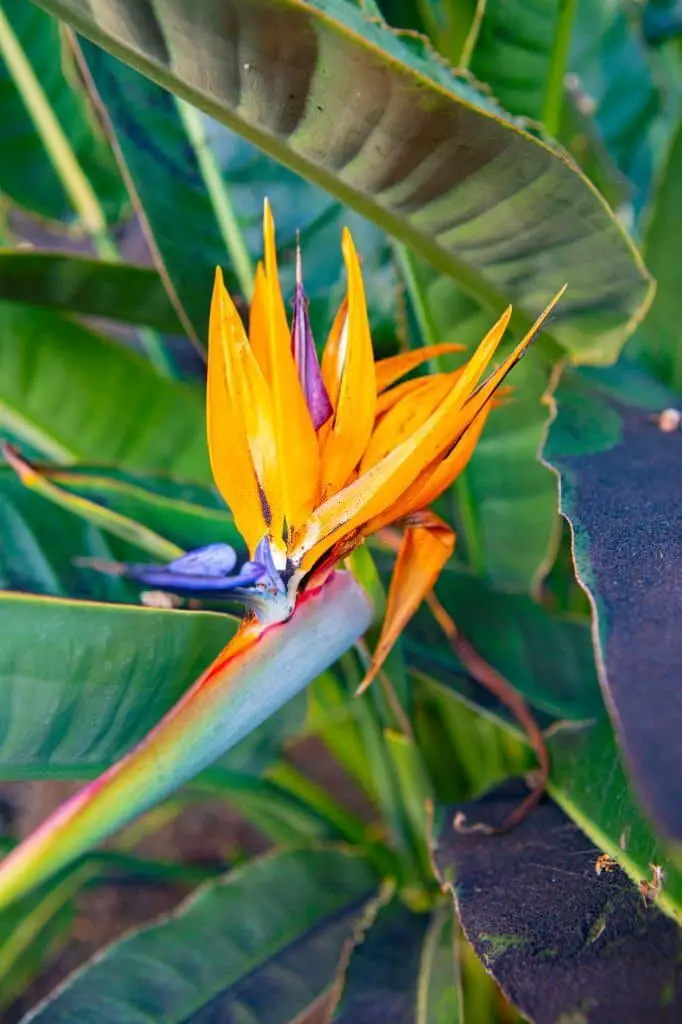
The majestic Bird of Paradise is not only a stunning floral species, but it’s also steeped in symbolism and cultural significance. Native to South Africa, this exotic bloom was introduced to Mexico in the early 20th century and has since become an integral part of the country’s botanical landscape. The plant can grow up to ten feet tall, with flowers that reach six to eight inches in length, boasting vibrant orange, blue hues and a regal purple throat.
As a symbol of hope, beauty, and paradise, the Bird of Paradise is deeply rooted in Mexican culture. Its national pride significance is further underscored by its status as Mexico’s official flower. The rich cultural heritage and history that the country embodies are beautifully reflected in the bird’s kaleidoscopic colors, which serve as a testament to the nation’s vibrant identity.
For those fortunate enough to experience the blooming season firsthand, taking a leisurely stroll through Mexico’s gardens or public parks is an absolute must.
Chocolate Cosmos (Cosmos atrosanguineus).
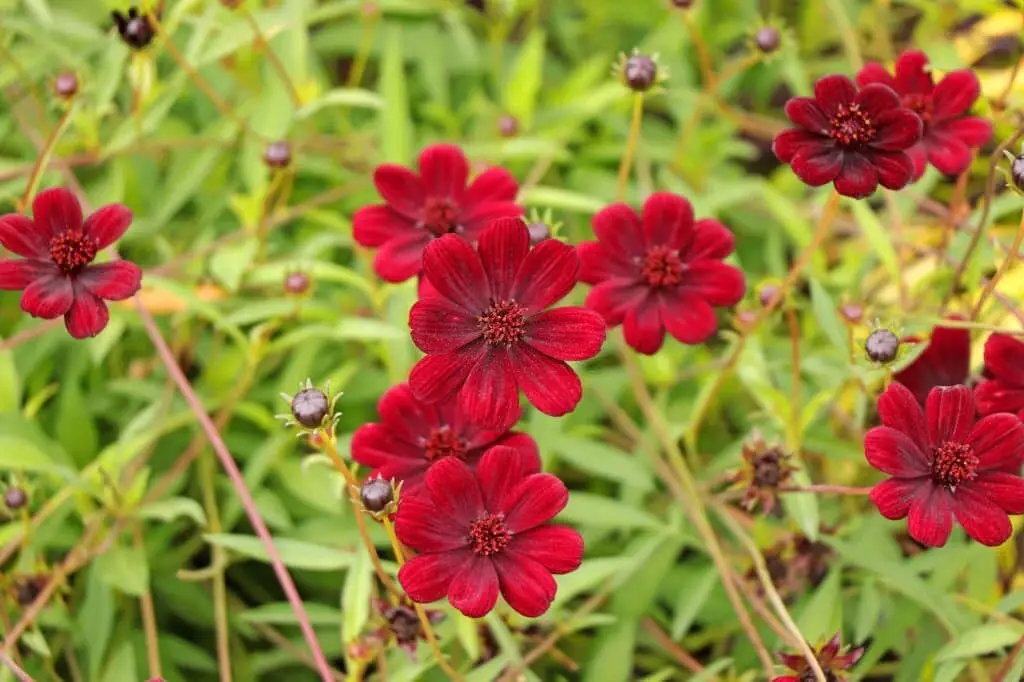
The stunning Cosmos atrosanguineus, also known as chocolate cosmos, is a perennial herbaceous plant that thrives in the daisy family. Native to Mexico, this beauty grows up to 50 cm (20 in) tall and wide, boasting dark green, lanceolate leaves with toothed margins. Its striking features don’t stop there – the flowers themselves emit a rich, chocolate-like fragrance, and are a vibrant red hue with a black center. This breathtaking bloom takes center stage from June to October.
As an ornamental plant, Cosmos atrosanguineus is cultivated in Europe, North America, and Australia. For optimal growth, it prefers well-drained soils and full sun to partial shade. Notably, this plant is drought-tolerant, but will not thrive in waterlogged conditions. Propagation typically occurs through seed or division in spring.
Beyond its captivating appearance, the chocolate cosmos holds deep cultural significance.
Native to Mexico, it symbolizes profound love and is often used in perfume making. In Aztec mythology, the flower is linked to Xochiquetzal, the goddess of love and fertility. When viewed through the lens of symbolism, Cosmos atrosanguineus represents both passion and purity – its deep red hue evoking love and desire, while its intoxicating aroma embodies purity.
Dahlia.
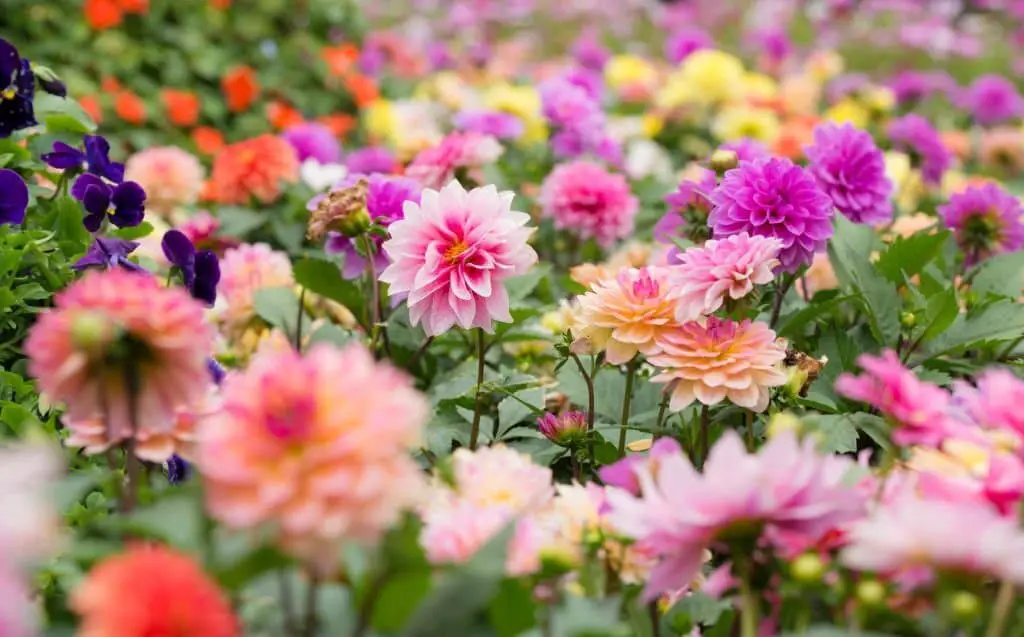
The dahlia, a genus of bushy, tuberous herbaceous perennials, is native to Mexico and Central America. As a member of the Asteraceae family, also known as Compositae or dicotyledonous flowering plants, this perennial was first described by Spanish botanist Antonio José Cavanilles in his Icones et Descriptiones Plantarum publication in 1789. There are approximately 42 dahlia species, with many hybrids cultivated as ornamental garden plants.
The flowers’ varied forms feature a single head per stem, ranging from small button-like blooms to those measuring nearly a foot (25 cm) in diameter. Notably, the dahlia is Mexico’s national flower, officially declared so in 1963. In terms of symbolism, the dahlia represents dignity and elegance, as well as the sentiments ‘forever thine’ and ‘change.’
Gentian Sage (Salvia patens).
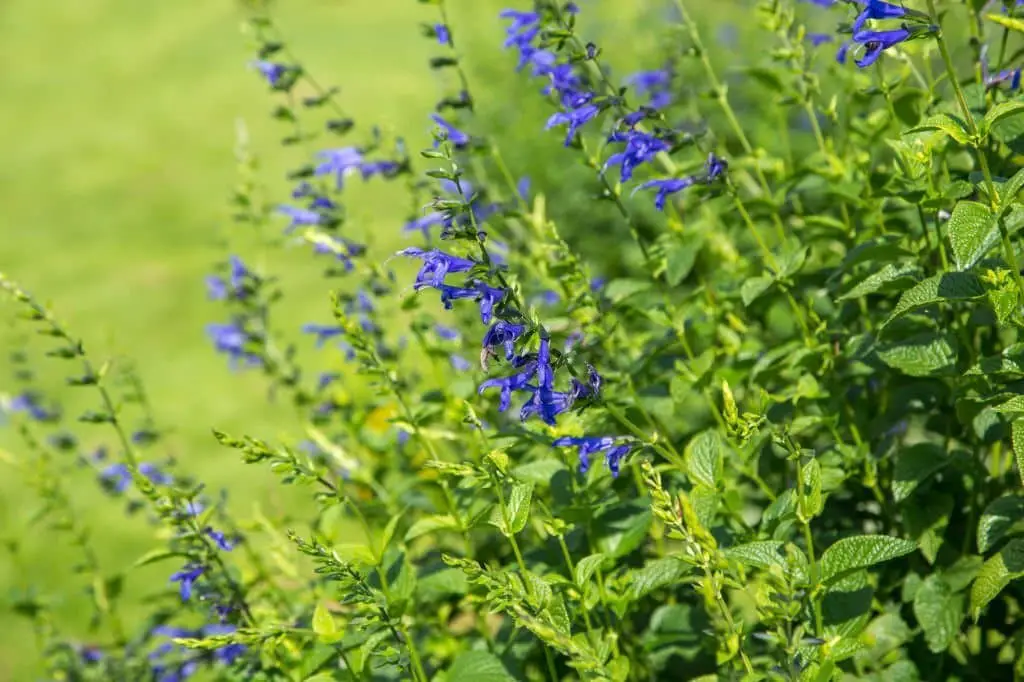
Gentian sage, also known as blue sage, is a stunning Mexican native that brings a touch of elegance to any garden. Its striking deep blue flowers bloom on tall spikes that can reach up to three feet in height, creating a dramatic display of color and texture. This perennial plant thrives in full sun and well-drained soil, making it an ideal choice for those who want low-maintenance beauty. Moreover, Gentian sage is incredibly drought-tolerant, requiring minimal upkeep once established.
Its unique charm has made it a popular addition to butterfly gardens and hummingbird habitats.
Beyond its aesthetic appeal, Gentian sage carries deeper significance. The plant’s deep blue hue is often linked to wisdom and knowledge, while its presence is said to represent peace and serenity. In certain cultural contexts, Gentian sage is believed to possess purifying properties, promoting spiritual growth and self-reflection.
For those interested in learning more about the diverse world of sage plants, we’ve prepared a comprehensive guide featuring 26 types of sage for your garden, including culinary, medicinal, and ornamental varieties.
Laelia Orchid.
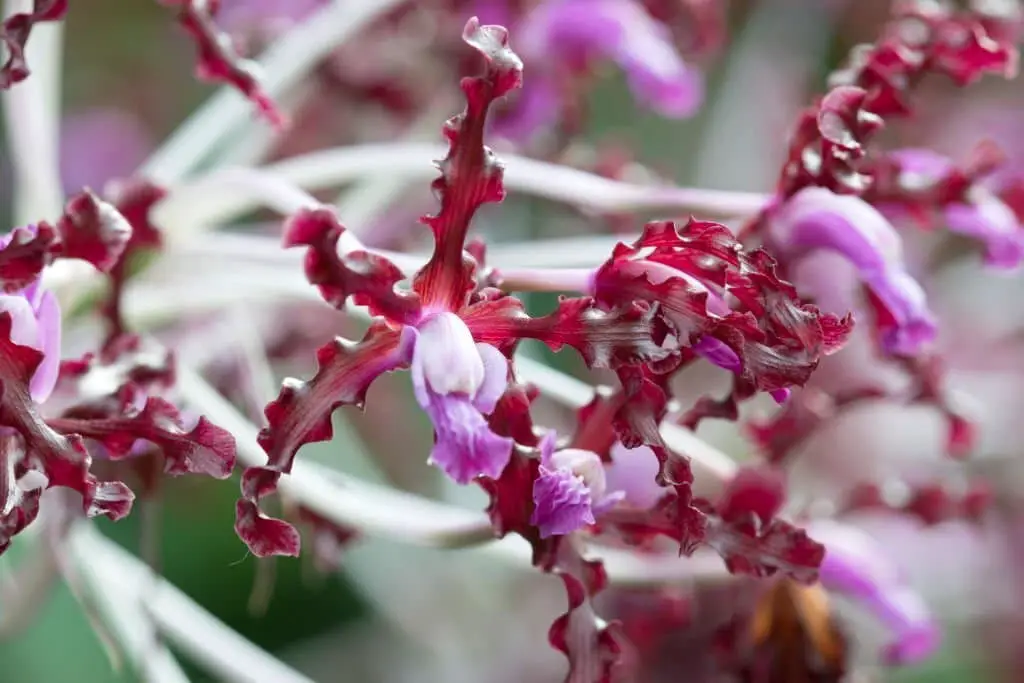
The Laelia orchid, native to Mexico, bursts into bloom during late summer and fall with its striking, showy flowers that span a vibrant spectrum of white to purple hues. As a popular choice for gardens and cut flower arrangements, the Laelia orchid is prized for its dramatic presence. Beyond its aesthetic appeal, the Laelia orchid is steeped in symbolism and meaning, conveying concepts like beauty, luxury, and refinement.
The large, opulent blooms are said to embody abundance and prosperity, making it a coveted feature in any setting. Furthermore, the white flowers of the Laelia orchid are often seen as a symbol of purity and innocence, while the regal purple blooms evoke royalty and majesty. For those looking to deepen their understanding of these enigmatic flowers, consider exploring related resources like our comprehensive guide to the many types of orchids that exist.
Mexican Cacti.
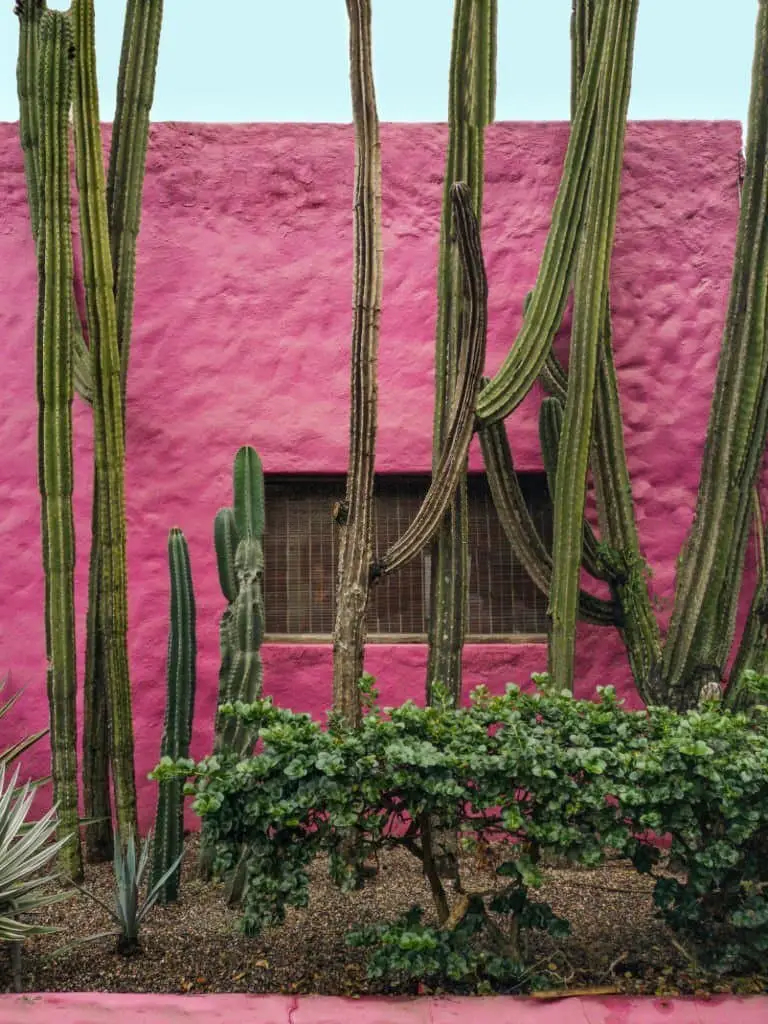
In Mexico, the iconic Mexican Cacti are a staple, not only for their striking appearances but also for the symbolism they carry. These versatile plants come in a variety of colors, with green being the most common hue. However, you may also stumble upon pink, yellow, or even white specimens, each adding a unique touch to any space. When it comes to decor, Mexican Cacti are a popular choice, but their significance extends beyond mere aesthetics.
According to tradition, they’re said to bring good luck and happiness to those who welcome them into their homes. Moreover, this resilient plant is often seen as a symbol of strength, capable of repelling negative energy and offering protection.
Mexican Frangipani.
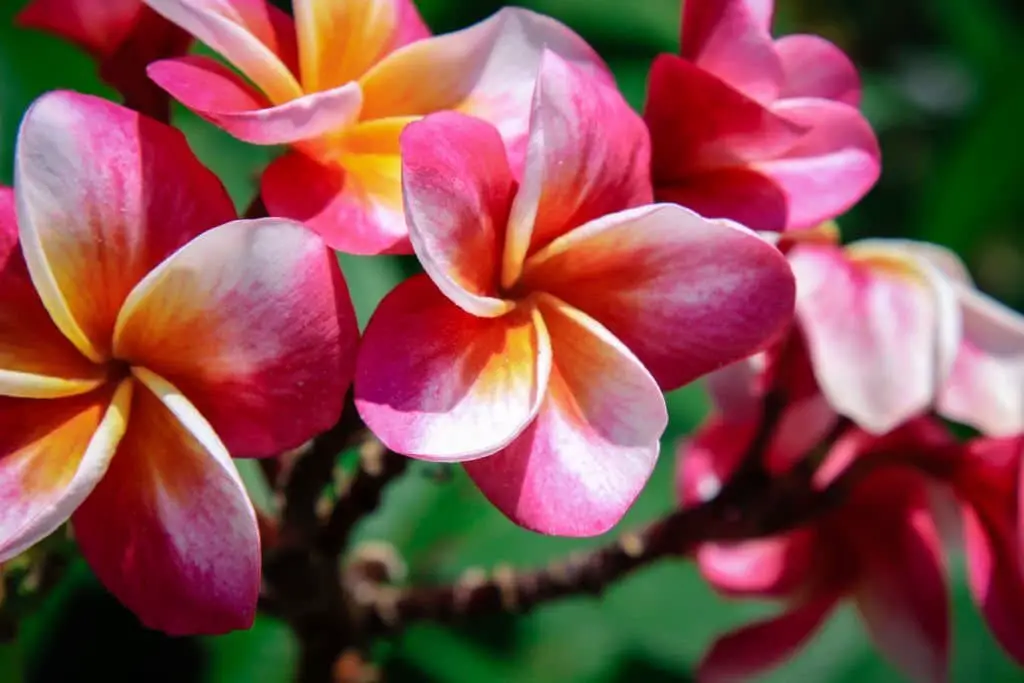
In Mexico, a stunning flower known as plumeria in Italian, holds great cultural significance. Dubbed ‘frangipani’, this bloom embodies good luck, serenity, and joy in many societies. Its sweet, alluring aroma can effortlessly permeate an entire room, making it a top pick for milestone events like weddings.
Mexican Hat Flower.
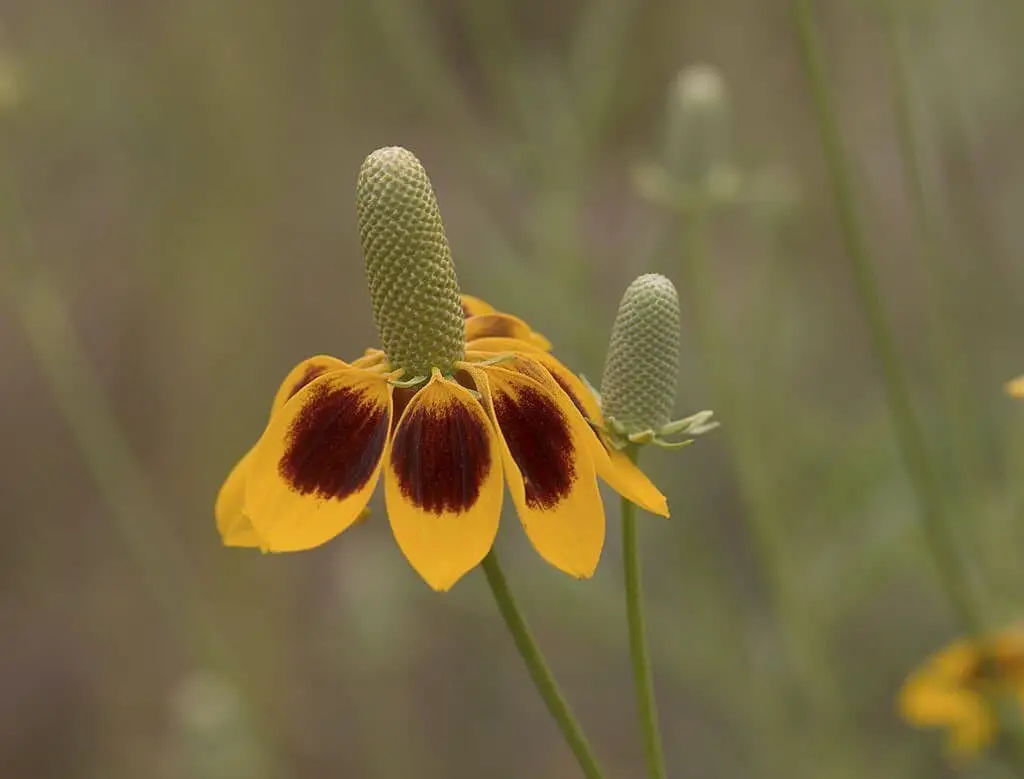
The Mexican Hat Flower, native to Mexico, is a breathtaking bloom that boasts an impressive color palette, comprising white, pink, red, purple, and yellow hues. Its versatility has made it a top pick for bouquets and arrangements, earning it the nickname ‘Cinco de Mayo Flower’ in the process.
Beyond its aesthetic appeal, the Mexican Hat Flower carries significant meaning and symbolism.
It is often seen as an omen of good fortune, serving as a reminder that positive energies can manifest in one’s life. Moreover, this flower is also revered for its ability to represent love and friendship, making it a popular choice for celebrations and commemorations.
Mexican Honeysuckle.
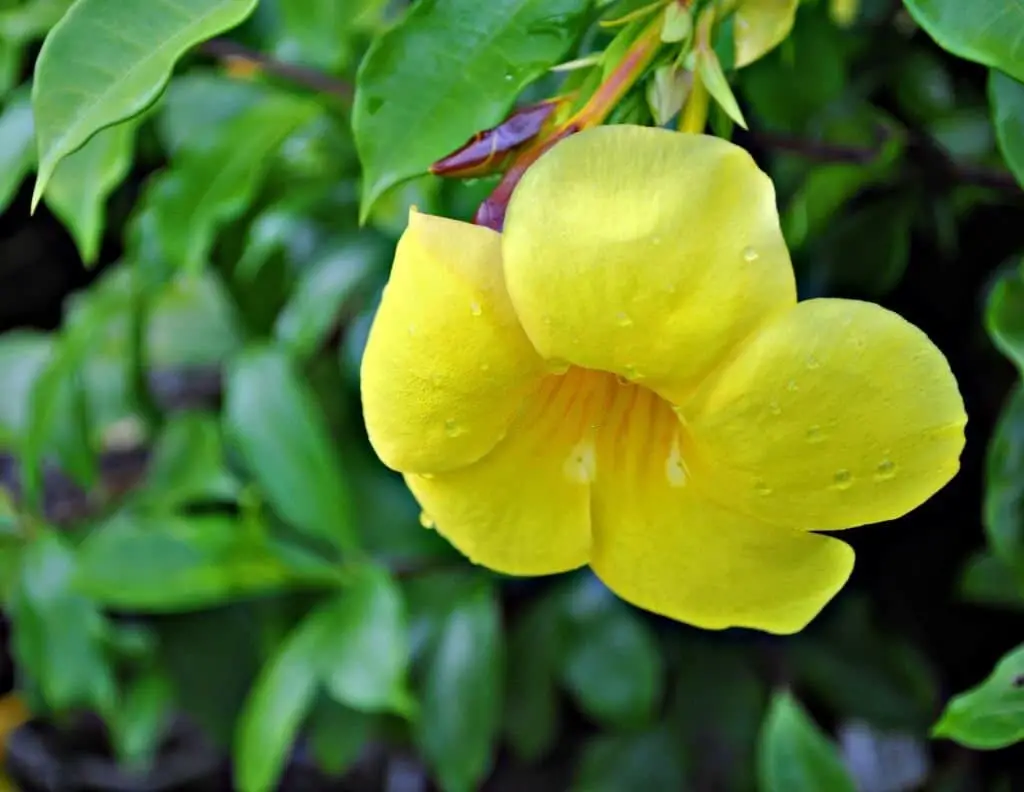
This evergreen vine, also referred to as quauilite, has its origins in Mexico and can be spotted growing wild in mesquite bosques and along rocky hillsides. The plant’s long, slender leaves are adorned with small yellow flowers that bloom from March to May, filling the air with a sweet fragrance. Native to Mexico, the vine is known for its rapid growth, reaching lengths of up to 15 feet.
It has become a popular choice for landscaping in the southwestern United States and is also used as an ornamental plant in Mexico due to its ability to thrive in a variety of conditions. Mexican honeysuckle is particularly well-suited to dry environments and can flourish in clay, sand, or any combination thereof. While it prefers full sun, it can tolerate partial shade as well. However, the plant’s lack of frost-hardiness means it should be protected from cold weather.
Propagation of this vine can be achieved through seed or cuttings. The name quauilite has its roots in the Nahuatl word cuauhxillotl, meaning ‘vine of Cuauhtémoc’, the last Aztec emperor, and is also referred to as the ’emperor’s vine’. In Mexico, this plant holds great cultural significance as a symbol of good luck.
Mexican Lady’s Slipper (Cypripedium mexicanum)
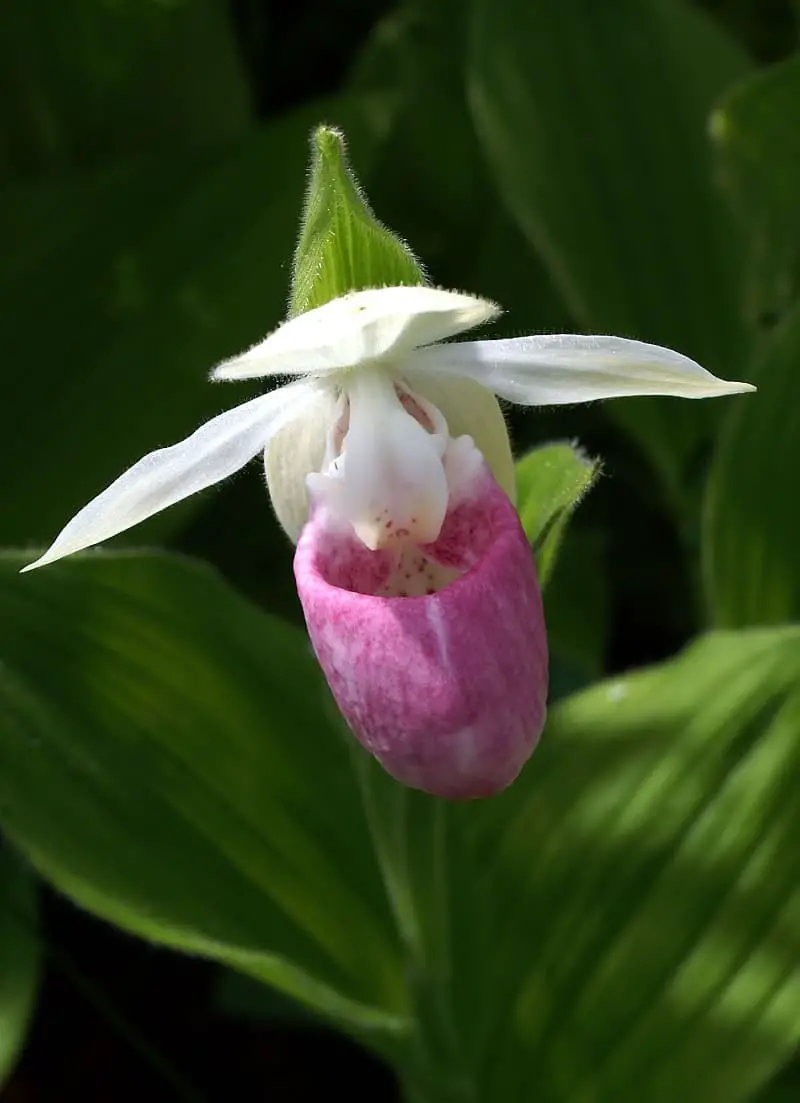
In Mexico’s limited terrain, the exquisite yet threatened Mexican Lady’s Slipper thrives. As the sole native representative of the Cypripedium genus in the country, this wildflower holds significant importance. The plant’s fragile and slow-growing nature means it takes years to reach maturity, with flowers only blooming every two to three years. Each individual produces a single or double bloom, highlighting its rare and precious status.
Unfortunately, habitat loss and over-collection have pushed the Mexican Lady’s Slipper towards extinction, with estimates suggesting fewer than 500 plants remain in the wild. In response, Mexican law protects this species from removal or collection, emphasizing the need for conservation efforts. Beyond its botanical significance, the Mexican Lady’s Slipper serves as a poignant reminder of our responsibility to preserve threatened species and their habitats.
Its beauty, elegance, and fragility evoke emotions, encouraging us to take action in safeguarding our planet’s biodiversity.
Mexican Marigold.
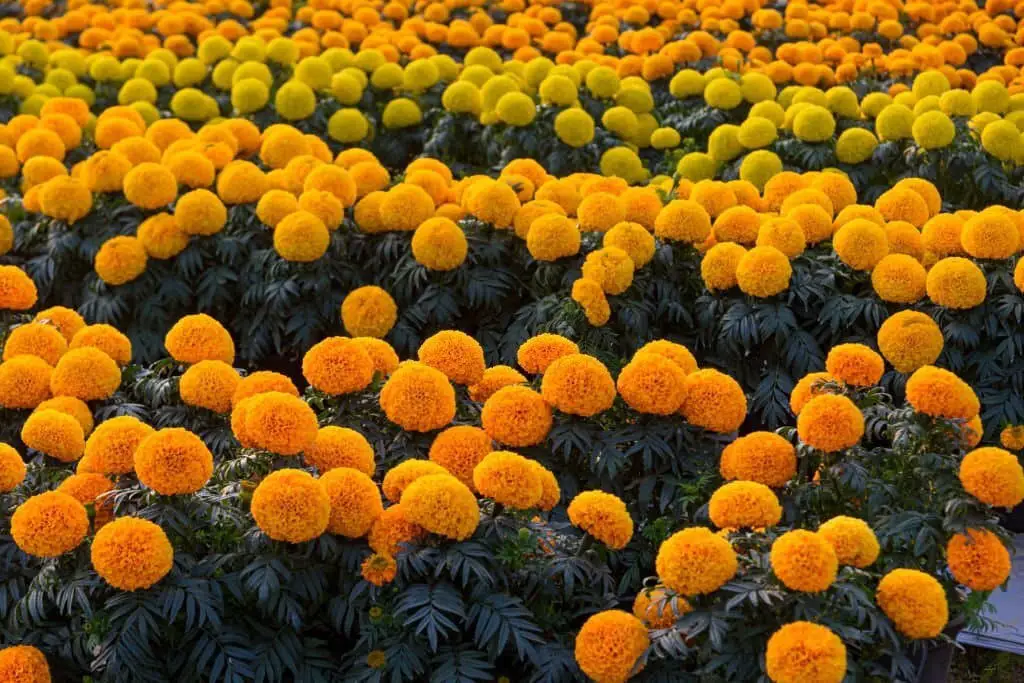
The Mexican Marigold, also known as the Aztec marigold or Flower of the Dead, is a flower that has been deeply rooted in Mexican culture for centuries. Not only does it bloom beautifully in the spring, but its uses extend beyond aesthetics to traditional medicine and ceremonial practices.
In Mexico, the plant’s strong connection to death and rebirth is evident in its use during the Day of the Dead celebrations, where it’s used to decorate graves and altars.
The flowers are said to guide the souls of the dead to the afterlife, making them a powerful symbol of mortality.
However, the Mexican Marigold’s symbolism doesn’t stop there. It’s also a representation of love and friendship, often given as a gift to friends and loved ones. Its significance in these contexts highlights the flower’s ability to transcend its physical beauty and hold deeper meaning for those who appreciate it.
Mexican Morning Glory (Ipomoea tricolor).
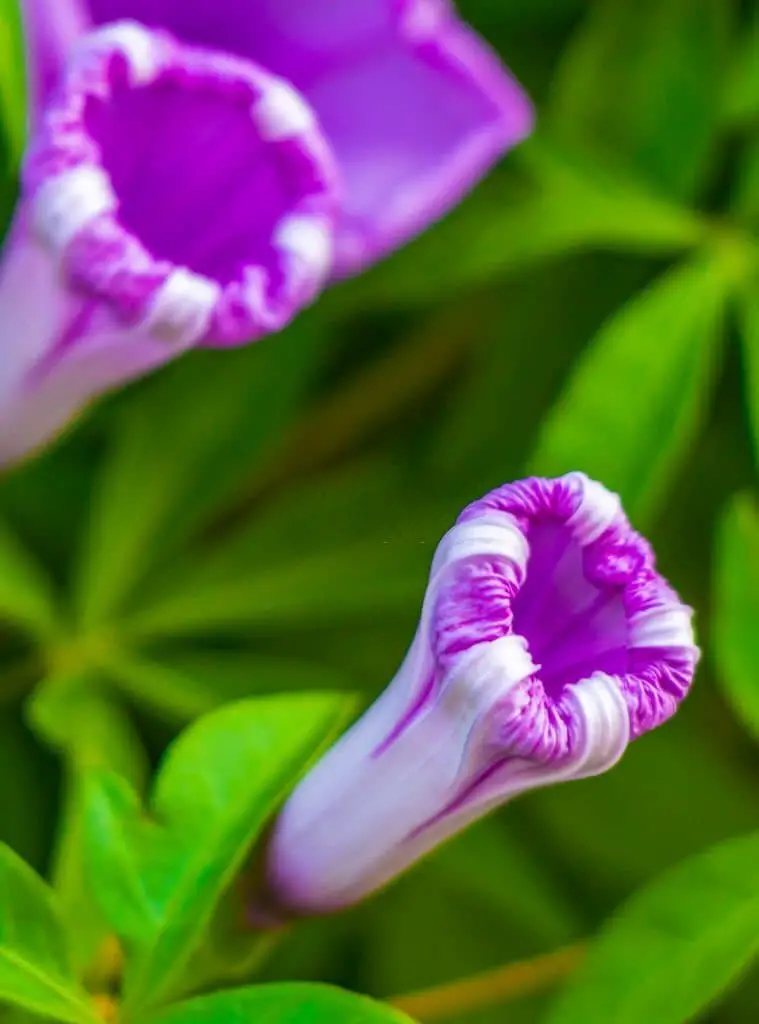
Ipomoea tricolor, also known as the morning glory vine, has its roots in Mexico, where it’s native to the region. Over time, the ornamental plant has been introduced to various parts of the world, becoming a popular addition to gardens and yards. Its unique characteristics include producing an array of white, pink, or blue flowers that bloom in the morning, only to close as the day winds down. Following the flower’s fleeting display, seed pods containing black seeds take center stage.
The morning glory’s symbolism extends beyond its striking appearance, representing eternity, resurrection, and hope. In Mexico, this plant is closely tied to the Virgin Mary, further emphasizing its cultural significance.
Mexican Passion Flower (Passiflora Mexicana).
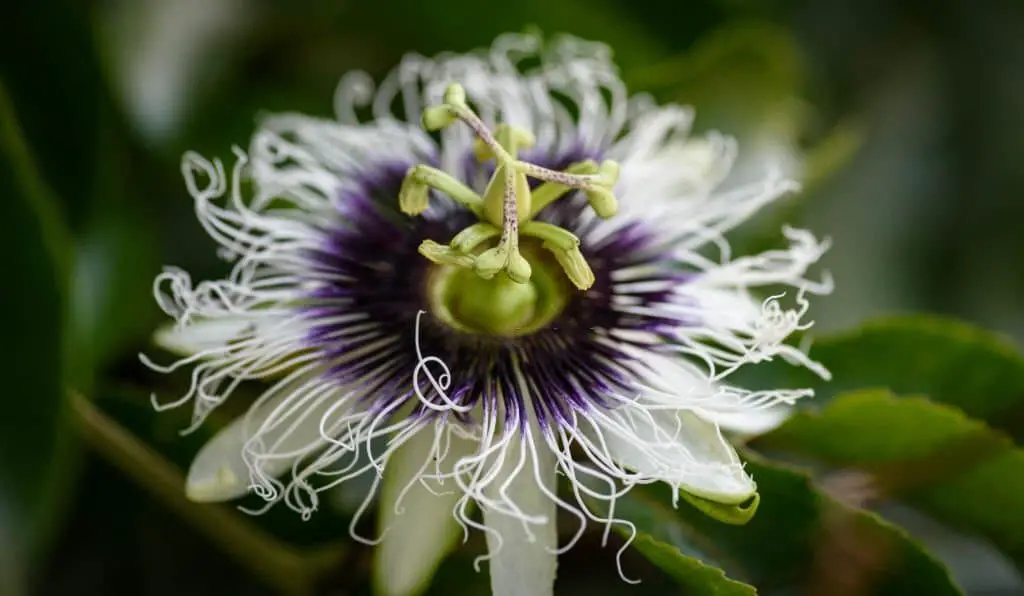
The Mexican Passion Flower, a member of the Passifloraceae family and relative of the renowned Passionfruit (Passiflora edulis), exhibits unique characteristics. This climbing vine can grow up to 15 meters in length, showcasing its remarkable adaptability. The leaves of this plant display variable shapes, primarily ovate or heart-shaped, reaching lengths of up to 15 centimeters.
Similarly, the flowers are also diverse in appearance, typically featuring white or pale purple hues with a diameter of up to 12 centimeters. The fruit, a spherical or oval-shaped berry, measures up to five centimeters in diameter, offering further insight into this fascinating species. Native to Mexico, the Mexican Passion Flower has been introduced to other regions, including parts of Central and South America, as well as the Caribbean.
Beyond its physical attributes, the Mexican Passion Flower is often associated with faithfulness, although its symbolism may not be as widely recognized as that of the more popular Passionfruit.
Mexican Poppy (Argemone Mexicana).
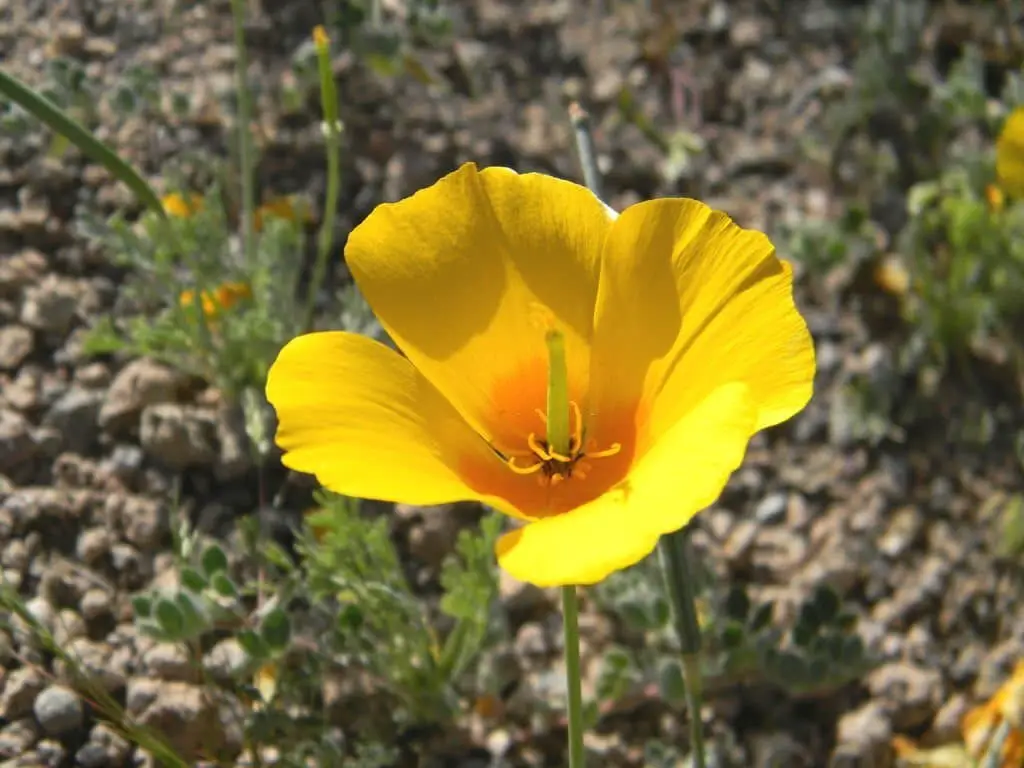
The Mexican poppy, a stunning and exclusive bloom, originates from Mexico and can be discovered in other regions of Central and South America. Its striking features include large, showy flowers typically white or pale pink in hue, adorned with red or purple edging on the petals. This plant’s popularity stems from its vibrant blooms and low-maintenance requirements, making it a sought-after choice for gardens and landscaping projects.
Despite being a hardy species, the Mexican poppy can thrive in poor soil conditions and withstand drought. Additionally, it exhibits remarkable resilience to various pests and diseases, further solidifying its appeal.
In terms of symbolism, the Mexican poppy is often associated with good fortune and luck, as well as love, passion, and desire. Its reputation as the ‘flower of forgetfulness’ suggests that it may aid in helping people overcome troubles and sorrows.
Mexican Sunflower (Tithonia rotundifolia).
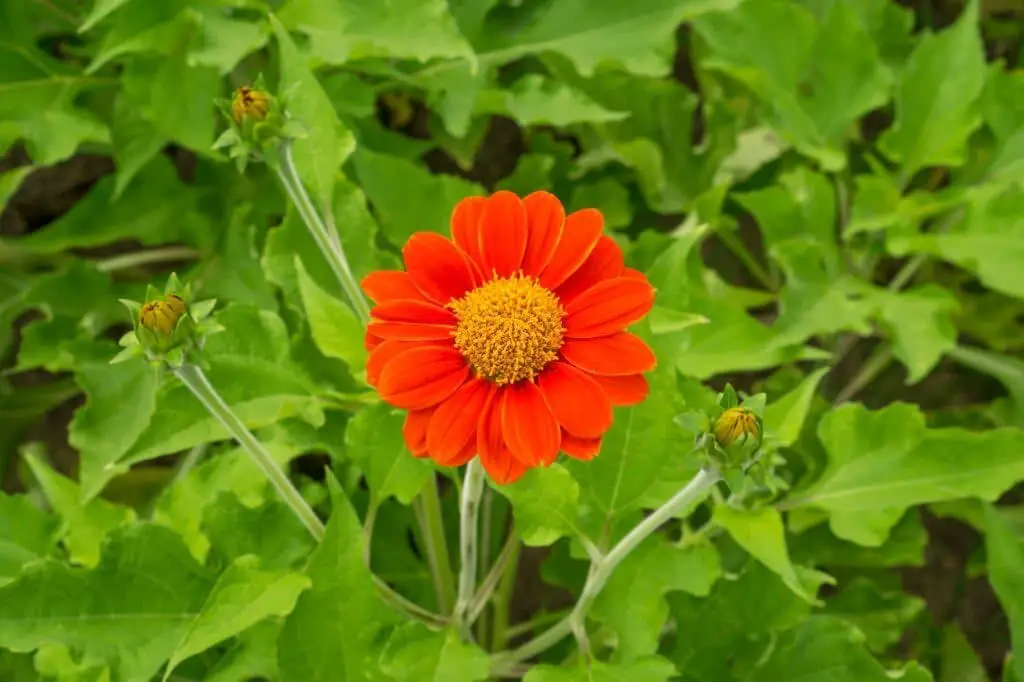
The Mexican Sunflower (Tithonia rotundifolia) is a vibrant annual herb that hails from Mexico. Reaching heights of 2-3 meters, its hairy, lobed leaves are a distinguishing feature. The plant’s striking flowers can be found in shades of red, orange, and yellow, making it a popular choice for gardens. Its showy blooms also attract pollinators like bees and butterflies, adding to its appeal.
Beyond its aesthetic value, the Mexican Sunflower holds significant meaning and symbolism.
It is often associated with warmth, happiness, and adoration, making it a thoughtful addition to any garden or arrangement.
Pineapple Sage (Salvia elegans).
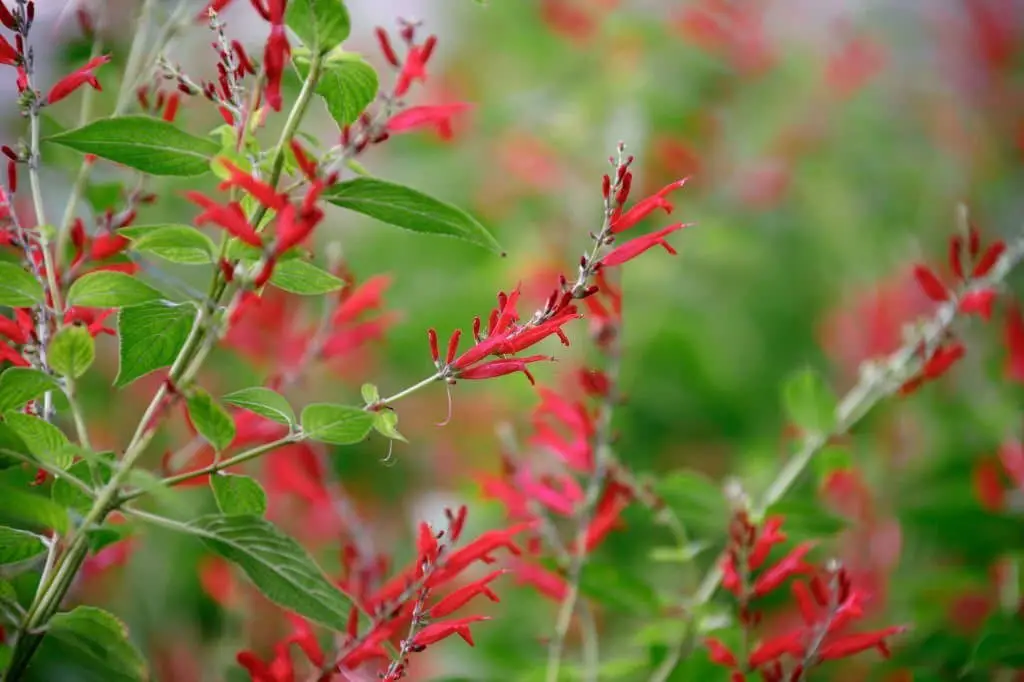
Pineapple sage is a captivating tender perennial that undergoes dormancy during cold weather only to return with vibrant life in the spring. Its stunning red flowers and aromatic leaves, reminiscent of pineapple, bring a tropical essence to any garden setting. Native to Mexico and Central America, this plant has been delighting European gardens since its introduction in the 18th century.
As an added bonus, the leaves are edible, perfect for incorporating into salads or as a garnish, while the flowers make a delectable addition to any dish. Beyond its visual appeal, pineapple sage is steeped in symbolism, representing good fortune, prosperity, and wealth. In Mexico, it holds a special significance as the ‘flower of the dead’, often used in Day of the Dead celebrations.
Poinsettia.
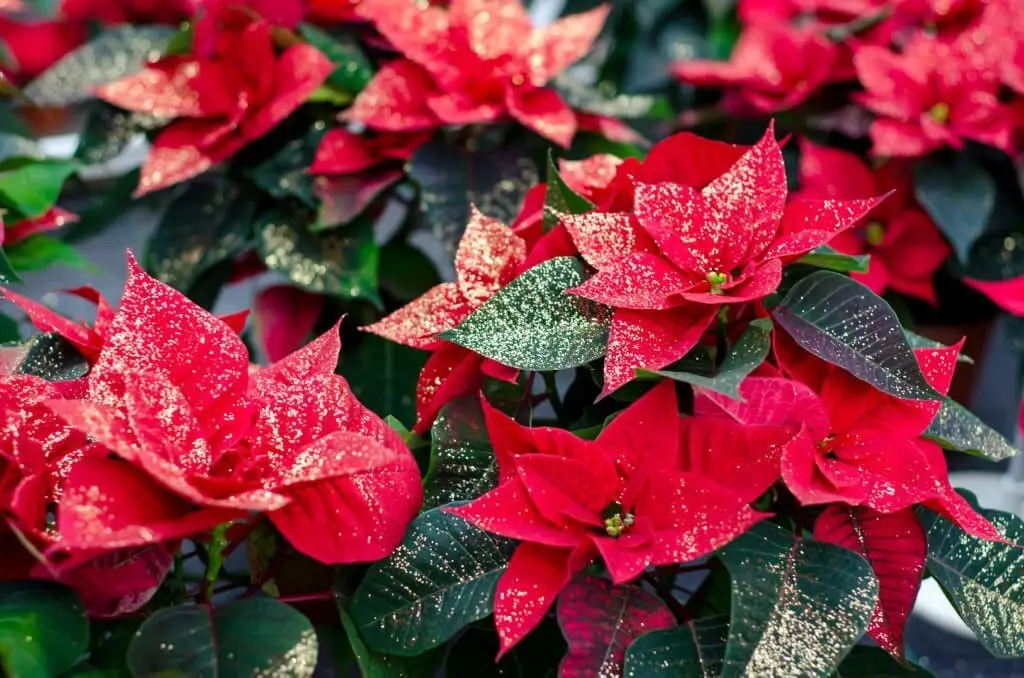
The poinsettia’s allure lies in its versatility as a festive adornment, particularly during the holiday season. Native to Mexico, this stunning plant was first introduced to American soil by Dr. Joel Roberts Poinsett, the first U. S. ambassador to Mexico, in 1828. While poinsettias come in a range of colors, their most iconic hue is undoubtedly red – a color owed to the bracts, or modified leaves, that encircle the flowers.
These vibrant appendages imbue the plant with an unmistakable charm, making it a popular choice for indoor and outdoor decor alike. When it comes to care, poinsettias are surprisingly low-maintenance. With proper attention, they can thrive in even the most modest of indoor environments, making them an excellent option for those new to plant parenthood or seeking a hassle-free holiday decoration.
Sword Lily (Gladiolus).
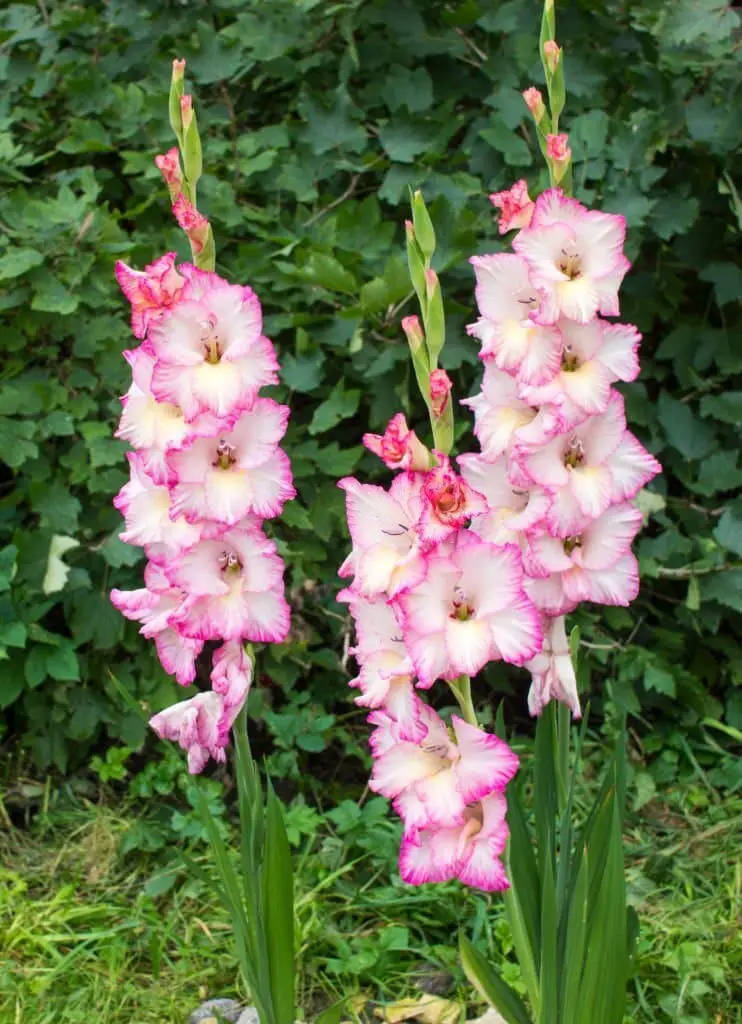
Within the iris family, the sword lily stands out for its vibrant, show-stopping blooms. These striking flowers emerge on tall stalks, boasting a kaleidoscope of colors including white, yellow, pink, red, and purple. As a native African plant, the sword lily thrives in warm climates, making it an ideal addition to any garden. Not only is it relatively low-maintenance, but its beauty is undeniable. Beyond its aesthetic appeal, the sword lily carries significant symbolic meaning.
It’s often seen as a representation of strength and courage, while the large, showy flowers are said to represent the human soul. Whether you’re looking for a statement piece in your garden or simply appreciate the symbolism behind this stunning plant, the sword lily is sure to impress.
Yucca Flower.
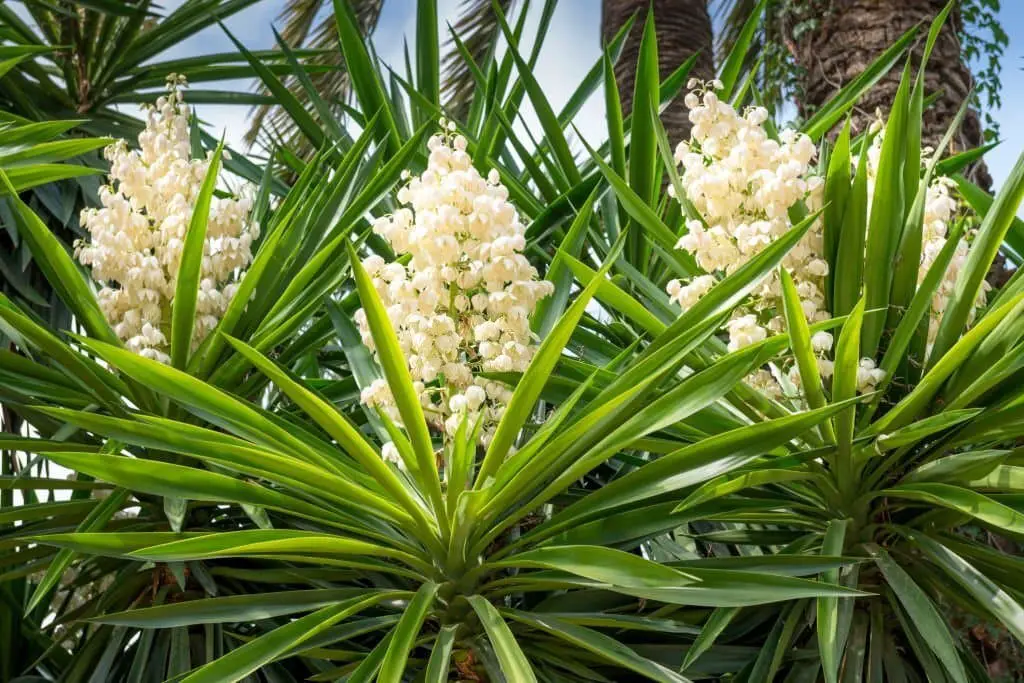
In the arid landscapes of Mexico, a striking sight can be seen – the yucca flower. Its beauty is often captured in bouquets and corsages. The yucca plant itself is a resilient perennial evergreen that can reach heights of up to 15 feet, defying the harsh conditions it thrives in. For about two weeks each year, from May to October, the yucca flower blooms with a fleeting lifespan, making every moment count. Bees and other insects play a crucial role in pollinating these flowers.
As they wilt, the seedpods are often used in dried arrangements, adding an extra layer of significance to this already remarkable plant. The yucca flower’s rich history in Mexico is deeply rooted – it was revered by the Aztecs as a sacred plant, earning it the nickname ‘tree of life’ due to its ability to flourish in such unforgiving environments.
The symbolism surrounding the yucca flower is just as remarkable.
It represents strength and durability, as well as the beauty that can emerge despite adversity. The yucca plant serves as a powerful reminder of how to persevere in the face of challenges, inspiring those who come across it.
FAQs
What flowers are common in Mexico?
Mexico is renowned for its vibrant floral diversity, with roses, lilies, and daisies being some of the most ubiquitous blooms. These flowers can be found in an array of colors, making them a staple choice for bouquets and arrangements. Beyond these common varieties, Mexico also boasts an impressive array of other popular flowers, including chrysanthemums, marigolds, and sunflowers.
Each of these flowers holds distinct cultural significance, imbuing them with unique meanings and symbolism that are deeply rooted in Mexican tradition.
What flower represents Mexican culture?
The poinsettia’s connection to Mexican culture is undeniable, as it originated from that country. Its introduction to the United States dates back to 1825. Interestingly, this flower is often referred to as the Christmas Flower due to its blooming period around Christmastime.
In Mexico, the poinsettia is affectionately known as the Flores de Nochebuena, which translates to ‘Flowers of the Holy Night’. As a symbol, it embodies hope, purity, and joy.
Furthermore, it’s said to represent the Star of Bethlehem, adding to its significance.
Which flower is the national flower of Mexico?
Mexico’s national flower, the Dahlia, is a stunning bloom that boasts an array of vibrant hues. Its beauty extends beyond its aesthetic appeal, as it has also been designated as the official flower of Mexico City. This distinction highlights the significance of the Dahlia in Mexican culture and tradition.
Conclusion
Infuse your home with the essence of Mexico’s rich cultural heritage by cultivating some of its breathtakingly beautiful flowers. Ranging from timeless roses to exotic bird of paradise, there’s an array of options to suit every taste. With proper care and dedication, you can bask in the splendor of these vibrant blooms for years to come.
Related Posts
When it comes to sending flowers, there’s often a question that lingers in the minds of many – do you tip your flower delivery person? As we delve into the world of floristry and explore various plant profiles, let’s take a moment to understand the importance of gratuities for those hardworking floral couriers. Alongside this, we’ll also touch on colorful perennials that thrive in partial shade gardens or containers, as well as offer advice on growing and caring for African Violet plants.
Furthermore, Astilbe plant enthusiasts will find valuable tips on cultivating these beautiful flowering perennials to brighten up even the shadiest of garden corners. Lastly, we’ll provide a top ten list of shade-perennial recommendations specifically tailored for those living in cold climates, helping you create a lush and vibrant shade garden.






